Pennsylvania has a stunning and diverse topography which includes mountains, valleys, and forests. It also has a rich network of lakes and rivers which include the vast Lake Erie. Therefore, it’s not surprising to find that there are plenty of aquatic and semi-aquatic animals in the state, and this includes snakes. In fact, of the 21 snakes in Pennsylvania, five of them can be found in and around the water. So, let’s learn about the water snakes in Pennsylvania, including what their preferred habitats are, what they look like, and whether any of them are venomous.
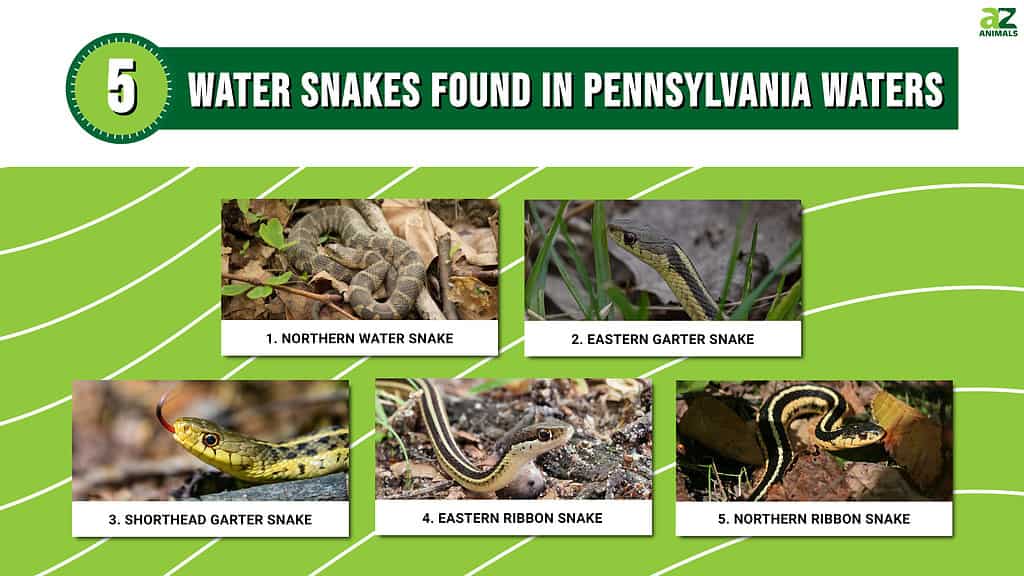
1. Northern Water Snake (Nerodia sipedon)
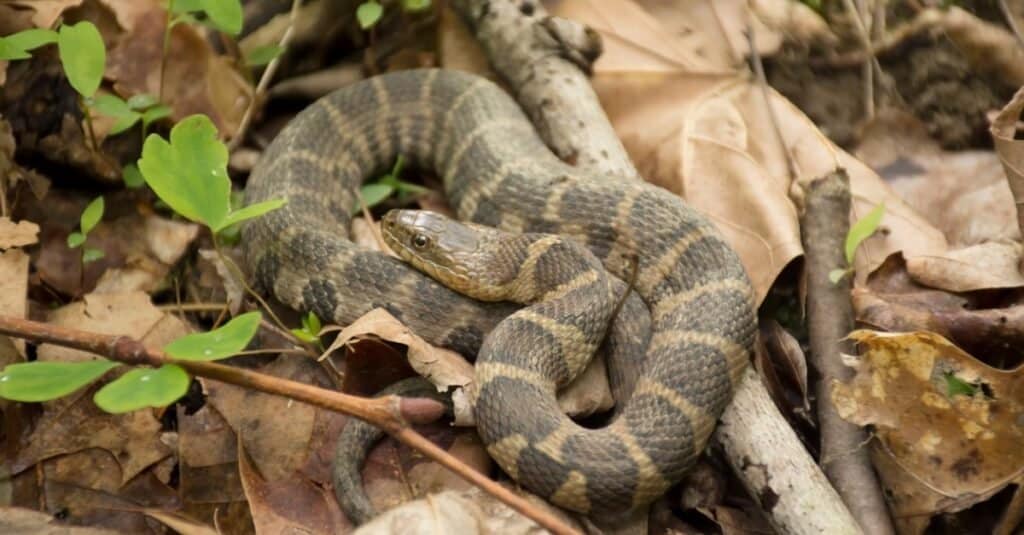
Northern water snakes inhabit most wetland habitats in the state.
©iStock.com/IcemanJ
The first snake that we’re talking about is the northern water snake which is a large, heavy-bodied snake that reaches 24 to 55 inches long. Northern water snakes are tan to greyish brown with reddish to dark brown markings. Their markings begin with wide crossbands in the head and neck region which become narrower as they move further down their body, eventually becoming rectangular blotches towards their tail. Northern water snakes are widespread in Pennsylvania and live in most freshwater habitats, rarely moving far from the water. They are powerful snakes and prey mainly on fish and frogs, although they may take some small birds and mammals if the opportunity arises. They are not venomous but can be extremely defensive if they are disturbed and will often bite.
2. Eastern Garter Snake (Thamnophis sirtalis sirtalis)
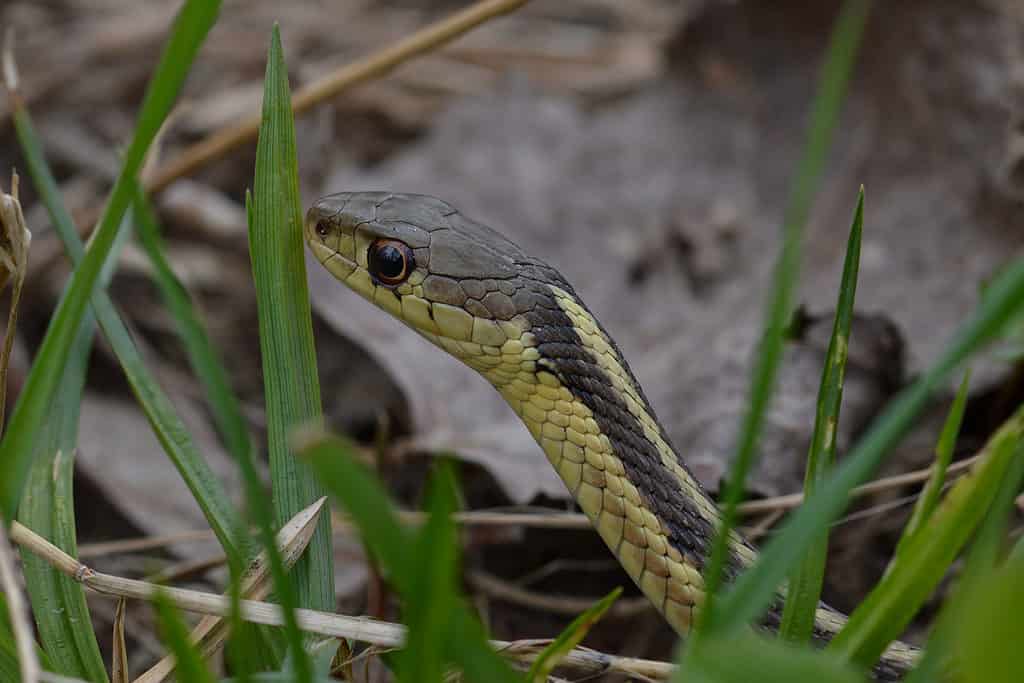
Eastern garter snakes are not dangerous to people but have venomous saliva which they chew into their prey.
©Ryan Hodnett, CC BY-SA 4.0, via Wikimedia Commons – License
The next water snake in Pennsylvania is the eastern garter snake. Eastern garter snakes are a subspecies of the common garter snake and are typically 18 to 28 inches long. They are brown, black, or olive green with three cream or yellow stripes. They also have red or black spots between the stripes, as well as a yellow or cream-colored belly with several black spots on it. Eastern garter snakes occur statewide and live in a variety of habitats, although they are closely associated with stream banks, rivers, and ditches. They prey on a range of fish, amphibians, slugs, and worms. These snakes are not dangerous to people, although they are venomous to their prey. This is because they produce a mild substance which is similar to venom, although it is found in their saliva instead.
3. Shorthead Garter Snake (Thamnophis brachystoma)
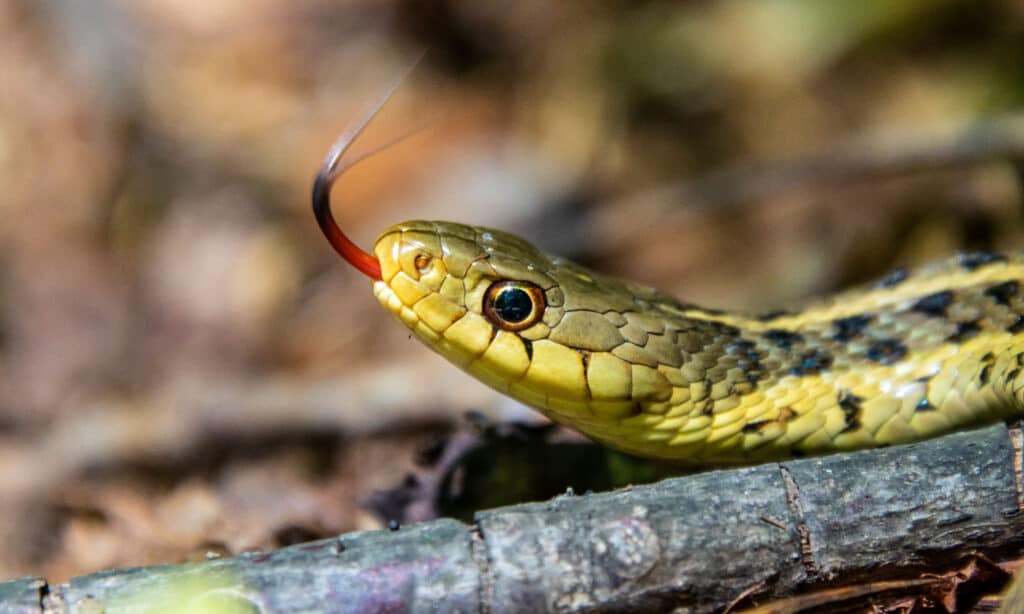
Shorthead garter snakes prey on small fish and earthworms.
©Eric Dale/Shutterstock.com
The next garter snake in the state is the shorthead garter snake which is also the smallest snake on our list at only 10 to 20 inches long. Shorthead garter snakes are brown to olive green and have three tan to yellow stripes. The side stripes are located on the second and third row of scales and may have black edges. Shorthead garter snakes are a species of special concern in the state. They inhabit woodlands and meadows, although they are typically found close to water where they may hide underneath logs and rocks at the water’s edge. Shorthead garter snakes predominantly prey on earthworms, although they may also prey on small fish. They are not dangerous and do not typically bite. However, when they are handled they sometimes defecate or release a foul-smelling musk.
4. Eastern Ribbon Snake (Thamnophis saurita saurita)
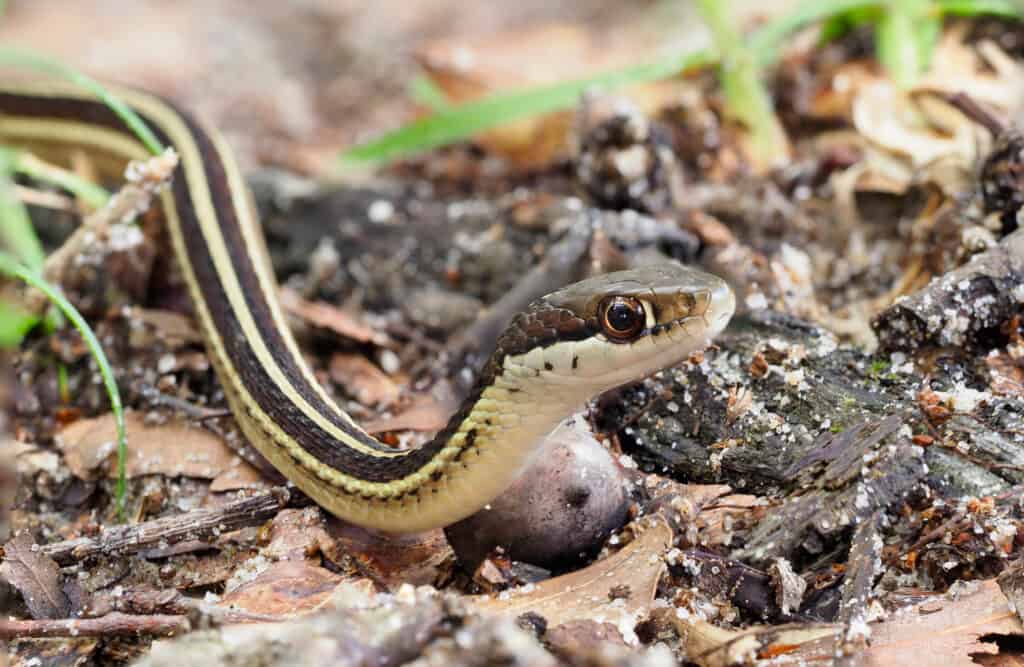
Eastern ribbon snakes have long tails which can be as much as one-third of their entire length.
©Steve Bower/Shutterstock.com
The eastern ribbon snake is the next water snake in Pennsylvania and is a subspecies of the ribbon snake. Eastern ribbon snakes are similar to garter snakes. However, they have much thinner bodies and a longer tail which is often around one-third of their body length. They are typically 20 to 34 inches long and are dark brown to black with three yellow stripes. Eastern ribbon snakes are often found close to water, with a preference for slow-moving water such as swamps and streams. They are not dangerous, although they may bite in self-defense if they are cornered or handled. However, eastern ribbon snakes typically flee into the water at the first sign of a threat, rather than remaining still.
5. Northern Ribbon Snake (Thamnophis saurita septentrionalis)
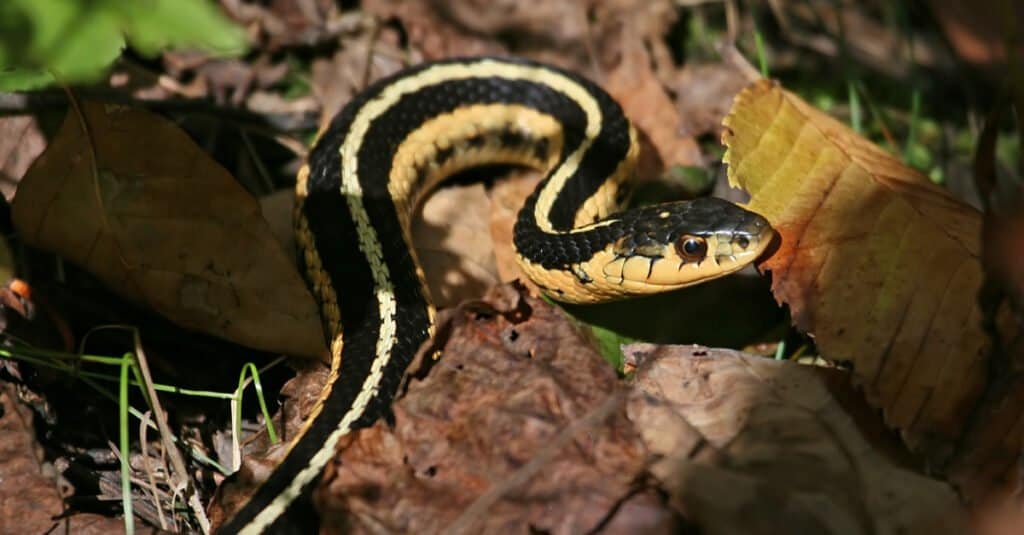
Northern ribbon snakes have distinctive yellow or cream stripes.
©John Czenke/Shutterstock.com
Another subspecies of the ribbon snake which occurs in Pennsylvania is the northern ribbon snake. Northern ribbon snakes are usually 18 to 26 inches long and again are brown or black with three distinctive stripes. Their stripes are either yellow or cream and occur down the center of their back and along each side on the third and fourth row of scales. They also have a yellowish-colored belly, although this is often closer to white on juveniles. Northern ribbon snakes also often have white markings around their mouth. Like the eastern ribbon snake, these snakes typically live near swamps, streams, and rivers and prey on fish, amphibians, and insects. They — along with the other water snakes in the state — are ovoviviparous and give birth in the late summer to early fall.
Summary of 5 Water Snakes Found in Pennsylvania Waters
| Rank | Water Snake |
|---|---|
| 1 | Northern Water Snake |
| 2 | Eastern Garter Snake |
| 3 | Shorthead Garter Snake |
| 4 | Eastern Ribbon Snake |
| 5 | Northern Ribbon Snake |
The photo featured at the top of this post is © iStock.com/Wildnerdpix
Discover the "Monster" Snake 5X Bigger than an Anaconda
Every day A-Z Animals sends out some of the most incredible facts in the world from our free newsletter. Want to discover the 10 most beautiful snakes in the world, a "snake island" where you're never more than 3 feet from danger, or a "monster" snake 5X larger than an anaconda? Then sign up right now and you'll start receiving our daily newsletter absolutely free.
Thank you for reading! Have some feedback for us? Contact the AZ Animals editorial team.






